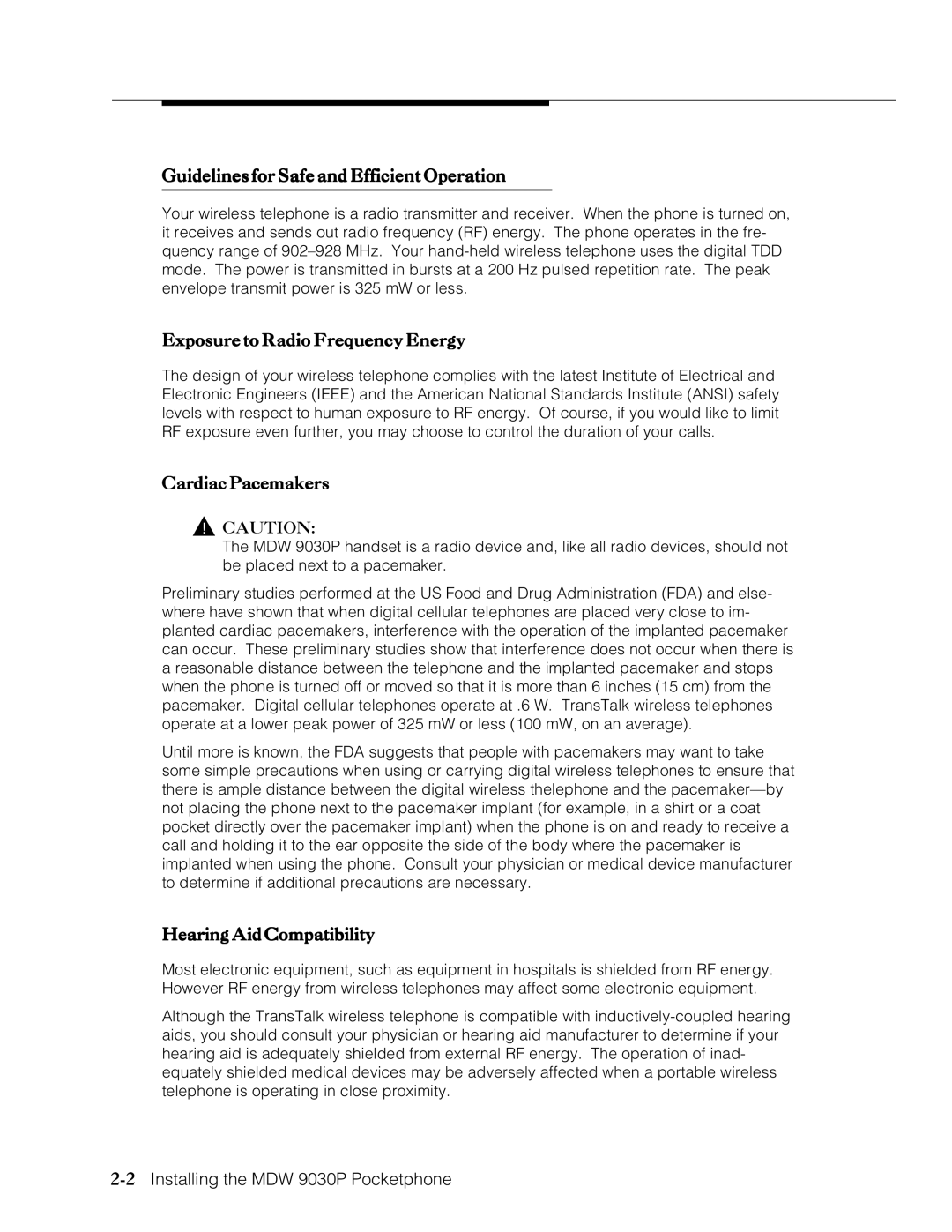
Guidelines for Safe and Efficient Operation
Your wireless telephone is a radio transmitter and receiver. When the phone is turned on, it receives and sends out radio frequency (RF) energy. The phone operates in the fre- quency range of
Exposure to Radio Frequency Energy
The design of your wireless telephone complies with the latest Institute of Electrical and Electronic Engineers (IEEE) and the American National Standards Institute (ANSI) safety levels with respect to human exposure to RF energy. Of course, if you would like to limit RF exposure even further, you may choose to control the duration of your calls.
Cardiac Pacemakers
!
CAUTION:
The MDW 9030P handset is a radio device and, like all radio devices, should not be placed next to a pacemaker.
Preliminary studies performed at the US Food and Drug Administration (FDA) and else- where have shown that when digital cellular telephones are placed very close to im- planted cardiac pacemakers, interference with the operation of the implanted pacemaker can occur. These preliminary studies show that interference does not occur when there is a reasonable distance between the telephone and the implanted pacemaker and stops when the phone is turned off or moved so that it is more than 6 inches (15 cm) from the pacemaker. Digital cellular telephones operate at .6 W. TransTalk wireless telephones operate at a lower peak power of 325 mW or less (100 mW, on an average).
Until more is known, the FDA suggests that people with pacemakers may want to take some simple precautions when using or carrying digital wireless telephones to ensure that there is ample distance between the digital wireless thelephone and the
Hearing Aid Compatibility
Most electronic equipment, such as equipment in hospitals is shielded from RF energy. However RF energy from wireless telephones may affect some electronic equipment.
Although the TransTalk wireless telephone is compatible with
